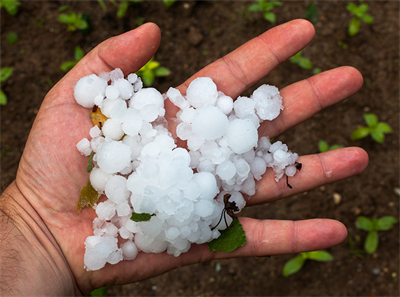How Weather-Related Losses Forced Farmers and Crop Insurance to Adapt
NAU Country's Chief Operation Officer Mick Deal recently spoke with Independent Agent magazine about the crop insurance industry's response to weather-related losses that farmers are consistently facing.
magazine about the crop insurance industry's response to weather-related losses that farmers are consistently facing.
Original publish date: February 12, 2024 | Independent Agent magazine | How Weather-Related Losses Forced Farmers and Crop Insurance to Adapt | By Olivia Overman | Source: https://www.iamagazine.com/markets/how-weather-related-losses-forced-farmers-and-crop-insurance-to-adapt
How Weather-Related Losses Forced Farmers and Crop Insurance to Adapt
Since 1980, the U.S. has sustained 373 separate weather and climate disasters where overall costs reached or exceeded $1 billion, according to data released by the National Oceanic and Atmospheric Administration (NOAA). The total cost of these events exceeded $2.6 trillion with costs for 2023 events estimated to have exceeded $73.8 billion.
“Recent climate extremes and weather events have had a significant impact on the crop insurance market as a whole," says Michael Deal, executive vice president, chief operations officer, NAU Country Insurance Company, a QBE Insurance Company. “Also, the increased frequency of these events has in turn led to an increased demand for labor and resources—there is not one aspect of our business that hasn't been affected."
Success within the farming industry depends on many things, but most significantly, it rests on climate. Extreme weather has been impacting the agricultural industry for years with crop insurance providing support for many of the losses experienced.
“Prominent examples where crop insurance coverage came into play include the extreme drought in the southern Plains in 2011, coupled with flooding along the Missouri River; the 2012 drought; the 2019 excessive moisture conditions resulting in farmer-prevented planting losses; the 2020 Midwest derecho; hurricane losses in the Southeast in 2020; and drought in the northern Plains in 2021," says Dave DeCapp, senior vice president, marketing, Farmers Mutual Hail Insurance.
Between 2001 and 2022, the Federal Crop Insurance Program (FCIP) sent farmers over $161.6 billion in payments for all causes of loss, with weather-related claims representing 73% of total payments, according to a report released by the Environmental Working Group. Payments made to farmers in 2022 were largely concentrated in 10 states and covered mostly four commodity crops including corn, soybeans, wheat and cotton.
However, “common trends being observed in the market include the overall increase in claims activity due to program expansion, changes in weather and policyholder buying patterns," Deal says. “The demand for program expansion and improvement has seen a rise, with a particular focus on shallow losses and subsidy rates."
Over the past number of years, “crop insurance has become the cornerstone of the farm safety net and provides farmers with access to an affordable risk management tool," DeCapp says. As the producer landscape continues to change, it is important for agents to recognize that the makeup of the market is evolving and the value of specialty crops protected by crop insurance has tripled, according to a report by the Economic Research Service (ERS) at the USDA.
The good news is when it comes to participating in crop insurance risk mitigation, it is at an “all-time high, resulting in over 90% of insurable acres being insured, which proves farmers are utilizing the program to mitigate such risk and weather events," says Joe Kirksey, regional director of crop insurance, Gallagher. “Farmers are also purchasing higher levels of coverage on their policy, which is a necessity to the rising input cost and diminishing profit margins. It is due to the crop insurance program that farmers are able to share this risk by purchasing a policy and ultimately, be able to withstand a disaster to farm another year."
Agents play a key role in ensuring farmers understand and acquire the coverage they need, particularly as the number of adverse climate events continue to rise. It's important to understand that some states that are not known for being in weather-related hotspots may now experience such losses.
For this, Deal offers two tips to ensure agents stay up to date on the coverage available for their clients:
1) Time: Devote as much time as possible to the policyholder's needs. The complexity of the program and the evolving needs and concerns of our farmers must be given the proper attention and evaluation.
2) Education: The industry offers an exemplary amount of continuing education. Attend meetings and training courses in your area and glean as much information as possible. For an agent, knowledge and reliability are everything in this business—and there are a lot of resources out here to support them.
In a world where farmers are facing adverse weather that is increasing in intensity and frequency, “the federal crop program has also evolved over time to accommodate the integration of conservation programs and farmer initiatives to incorporate climate-smart farming practices," DeCapp says. “The guidelines for program participation, based on good farming practices, have also evolved over time." Keeping abreast of this evolution will ensure agents are adding value to their client relationships.
Additional Resources:
